Last-Minute NYC Holiday Gift Guide 🎁
We’ve created a holiday gift guide with presents for the intrepid New Yorker that should arrive just in time—


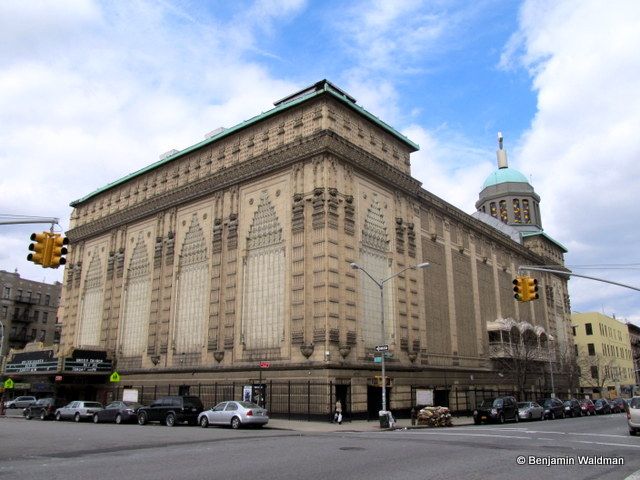
Upper Broadway, which has been called that “ignored stretch of Manhattan,” contains the remains of a number of former movie theaters from the golden age of the silver screen. While none of these buildings are currently utilized as movie theaters, their facades (and a few of their interiors) serve as reminders to their prior uses. Their conditions, both interior and exterior, range from abandoned to restored and are representative of many of the city’s old theaters. Walking down Broadway from Washington Heights to the Upper West Side I encountered these theaters some of which were instantly recognizable as such by their architecture, while others I only discovered were theaters during the course of writing this article. The theaters are arranged from North to South, beginning with B. S. Moss’ former Coliseum Theatre at 181st Street and Broadway and culminating with the former RKO 81st Street Theater at 81st Street and Broadway.
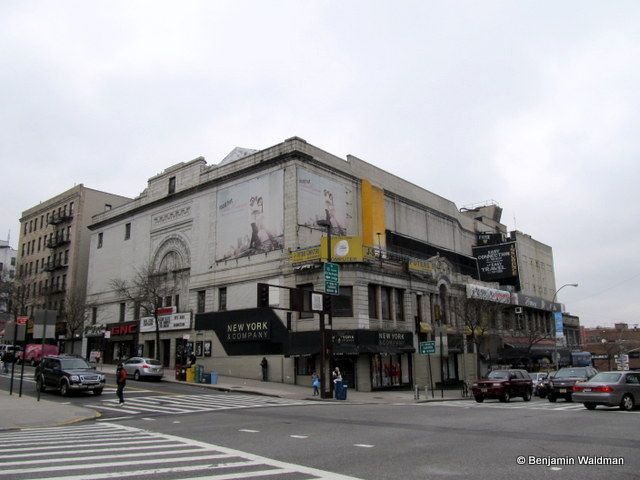
B. S. Moss’ Coliseum Theatre today
B. S. Moss’ Coliseum Theatre, located at 181st Street and Broadway, opened on September 24, 1920, to rave reviews and a full house. (The New York Public Library has an informative article on the theater including a copy of the opening night program, which features an image of the Roman Coliseum on its cover). It was designed by Eugene De Rosa, who designed a number of Broadway theaters. In addition to Harold Lloyd, who performed at the theater on opening night, the Marx Brothers, W.C. Fields, Eddie Cantor, and Gertrude Berg all performed there.
The 3,500 seat theater was the third largest in the city and was built on the site of the Blue Bell Tavern. The tavern had been in existence since before the Revolutionary War and George Washington spent a night there. According to Reginald Pelham Bolton, remains of the tavern were visible until the construction of the theater. The theater was taken over by RKO (Radio Keith Orpheum) and renamed the RKO Coliseum Theater. By the 1980s, the theater was subdivided into a triplex and the ornate marquee was taken down. The theater closed and re-opened under new management as a quadplex in 1991. This reincarnation of the theater closed in 2002. In 2004, another theater opened in the space only to close in October 2011.
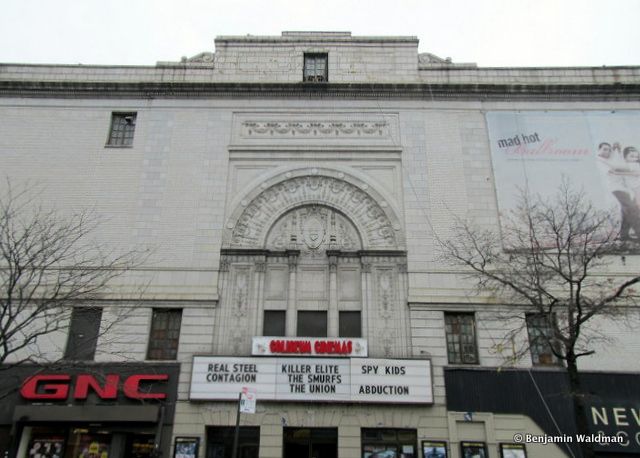 B. S. Moss’ Coliseum Theatre today
B. S. Moss’ Coliseum Theatre today

Loew’s 175th Street Theatre opened in 1930 as the last of the five Loew’s Wonder Theaters. These movie palaces were more palatial than the ordinary movie palaces of their day and were Loew’s flagship theaters. (The five are all still standing and are located in Manhattan, Brooklyn, Queens, the Bronx, and Jersey City–sorry Staten Island). Loew’s 175th Street Theatre was designed by Thomas Lamb, who was one of New York City’s greatest and most prolific theater architects. He designed close to 60 theaters in the City and over 300 worldwide.
The 3,292 seat theater has been described as a “as a monument to eclectic orientalia with a Moorish/Rococo influence.” In 1969, the theater was saved from possible demolition by Rev. Frederick J. Eikerenkoetter II (Reverend Ike) who transformed the theater into a church. The building, now known as the United Palace Theater, is still home to the Rev. Ike’s church and is also used as a performance venue. The church’s website provides a very informative message to those looking for reasonably priced venues in New York City– “Don’t let ‘ungodly’ costs run you away from New York!”
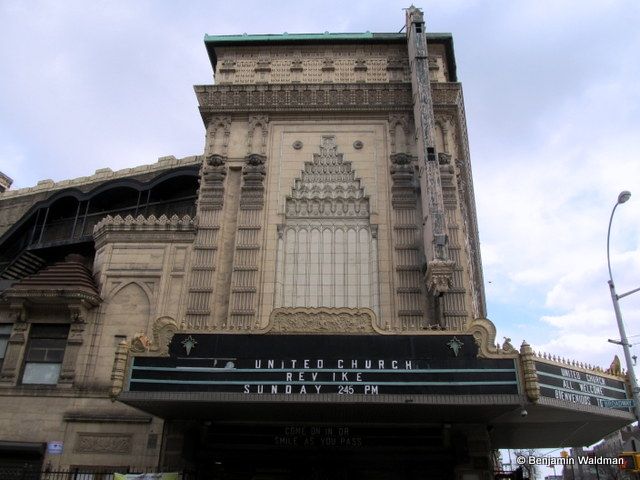
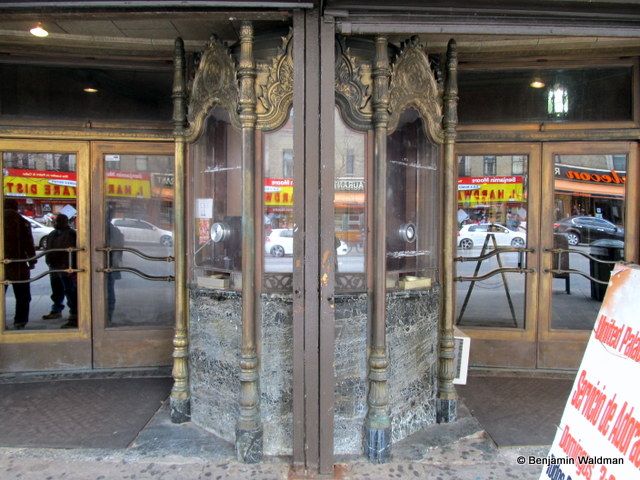
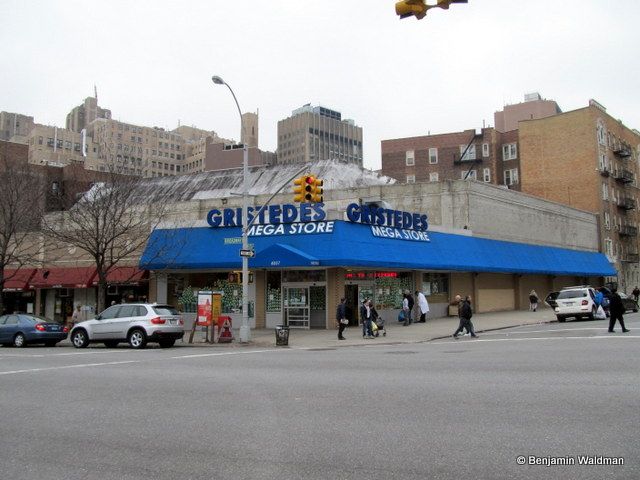
The Uptown Theater appears to have been designed by George M. Pollard and opened either in 1920 or 1926. It remained opened for close to forty years before being converted into a retail location. The lobby space is currently occupied by a Gristede’s supermarket and it is possible that some of the original details remain hidden above the current drop ceiling or behind the walls or ceilings of the other retail stores that occupy the theater’s former auditorium. (This theater appears to be one of the least documented theaters in the area).
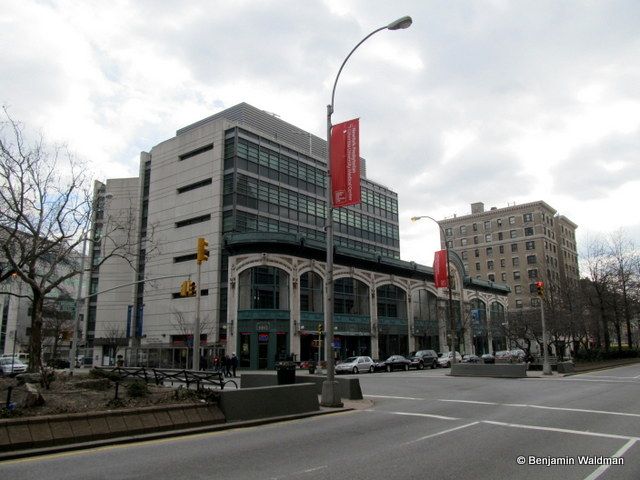
The 2,368 seat William Fox Audubon Theater, which is located between 166th and 165th streets, was constructed in 1912. The theater was designed by Thomas Lamb and in 1927, became one of the first theaters in the area to feature talkies. Lamb’s design still stands out, especially the ship’s prow, with the head of Neptune above the theater’s main entrance. The Audubon Theater became the Beverly Hills Theater and then the San Juan Theater before it infamously became the Audubon Ballroom. In the early 1970s, the theater closed and the building was used by a number of public agencies including the Department of Housing Preservation.
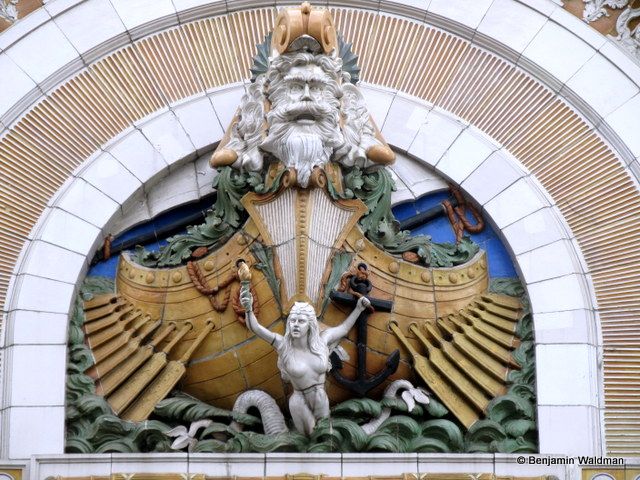
The second floor of the theater was constructed as a ballroom, which held dances and special events. As the neighborhood, and the times, changed so did the function of the ballroom. It became a place for those with political and social agendas to meet. Early efforts to organize New York City’s transit workers took place in the ballroom. It served as the original meeting hall for the IRT Brotherhood, an early transit union that every IRT worker was compelled to join, and later served as the meeting hall for the TWU (Transport Workers Union).
However, the Audubon Ballroom is most famous because of what occurred there on the twenty-first of February,1965. After leaving the Nation of Islam, Malcolm X founded the Organization of Afro-American Unity. Its weekly meeting were held in the Audubon Ballroom. During the Organization’s meeting on February 21, 1965, Malcolm X was assassinated while giving a speech. After the assassination, the Ballroom closed and was taken over by the City for non-payment of taxes. The former theater was purchased by Columbia, which began demolishing the structure in 1992. Before it was able to completely demolish the building, the University relented to public pressure and reached a compromise with local community groups. Columbia left most of the original Thomas Lamb facade (and even restored it) and provided space for the Malcolm X and Dr. Betty Shabazz Memorial and Educational Center within the building.
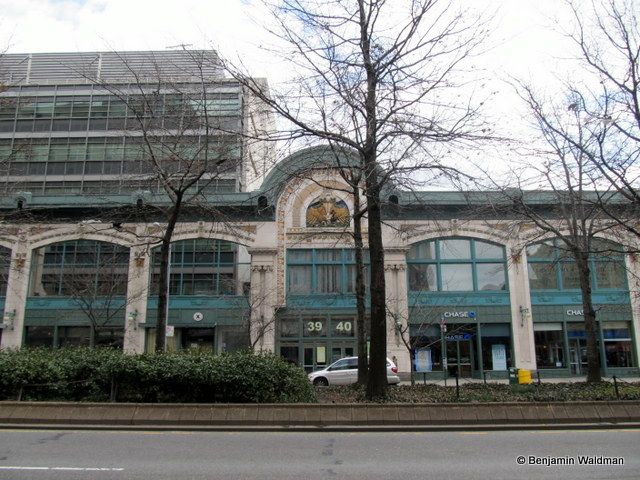
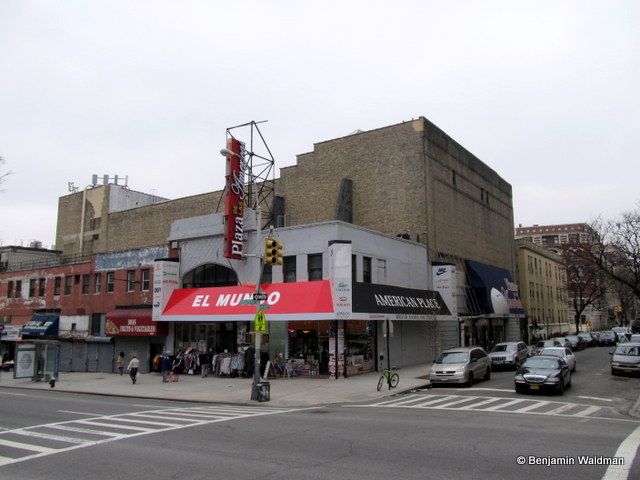
Unlike the other theaters in this article, the Loew’s Rio Theater at Broadway and 160th Street is not very ornate. The building that housed its auditorium looks like a typical theater building, while its lobby is very restrained compared with its neighbors. The theater began its life as a vaudeville-movie theater. In the early 1920s, the theater became a Loew’s theater. Unfortunately for the Rio, after the opening of the 175th Street Theater, the Wonder Theater, the Rio became a second run theater. The 2,603 seats seat theater was designed by Herbert J Krapp and closed in 1957. Any remaining details are currently hidden above a drop ceiling.
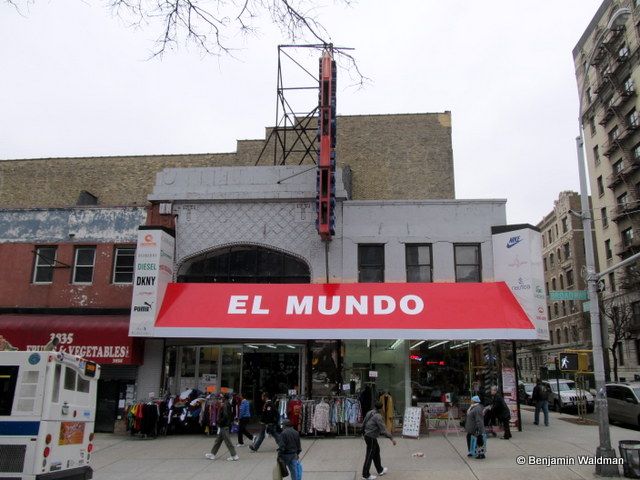
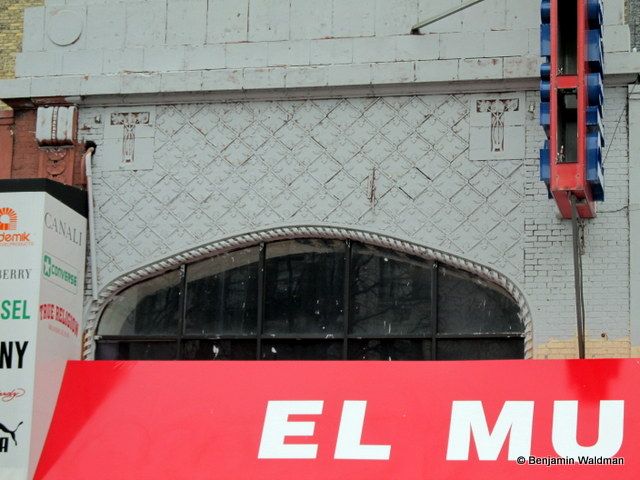
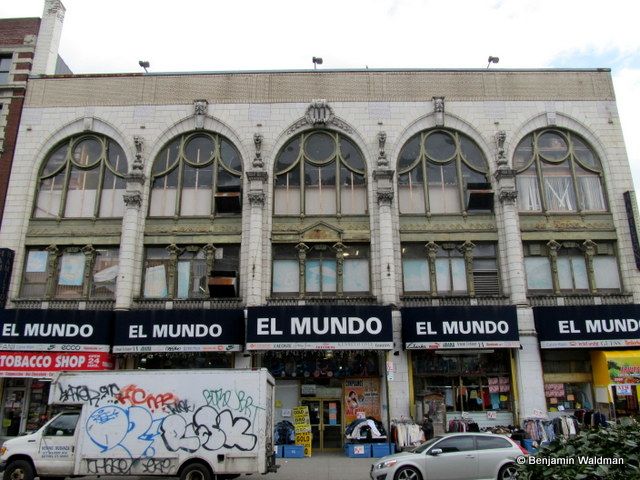
The Hamilton Theater, located at 146th Street, was designed by Thomas Lamb and opened on January 23, 1913. B. S. Moss (from the Coliseum Theatre, the first theater on our walk) and Solomon Brill financed and developed the theater. The Hamilton was originally named the Lafayette, but its name was changed to Moss and Brill’s Hamilton Theatre before construction was completed. This change was possibly to avoid confusion with a nearby theater also named the Lafayette that was under construction at the same time.
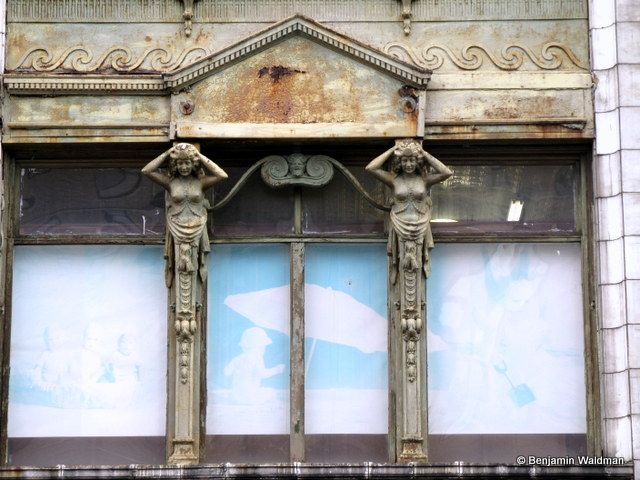
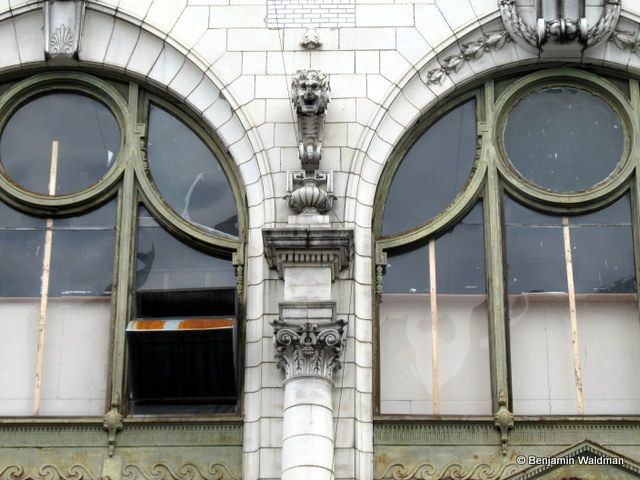
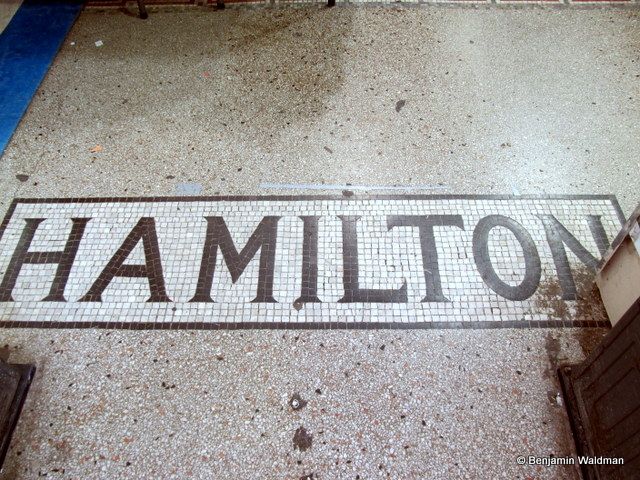
When RKO bought the theater, they redecorated its interior, in 1943, and modernized its lobby in 1954. The theater closed in 1958 and the space was subsequently used as a sports arena and then as a discotheque. The lobby is now an outlet of the El Mundo store while the interior of the theater has been left to deteriorate. The theater’s marquee was taken down in 1995. (For more photographs of the theater’s interior check out After the Final Curtain
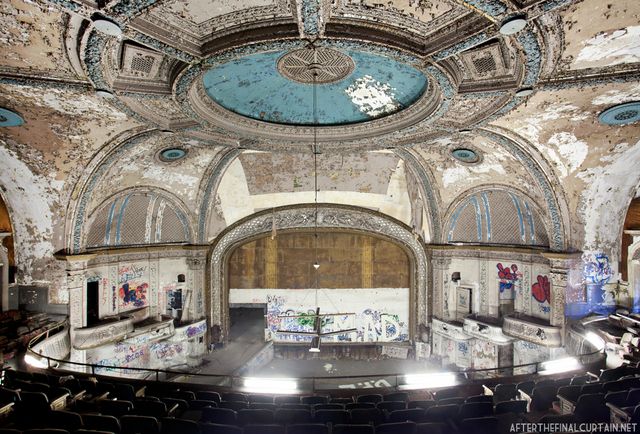 Interior image by Matt Lambros of After the Final Curtain
Interior image by Matt Lambros of After the Final Curtain
The Delmar Theatre (later the Gotham Theater) was designed by Herbert J. Krapp and opened in 1922. Around 1957, the theater was converted into a mixed-use building containing a dance hall and retail space. There is not much information available on this theater. Today it houses a McDonalds, T Mobile and other retailers.
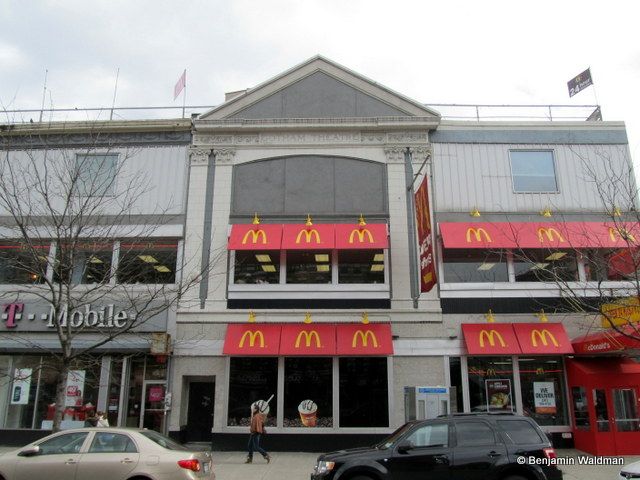
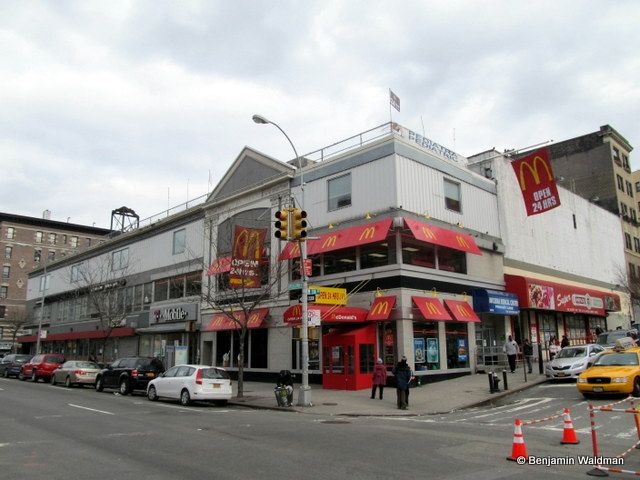
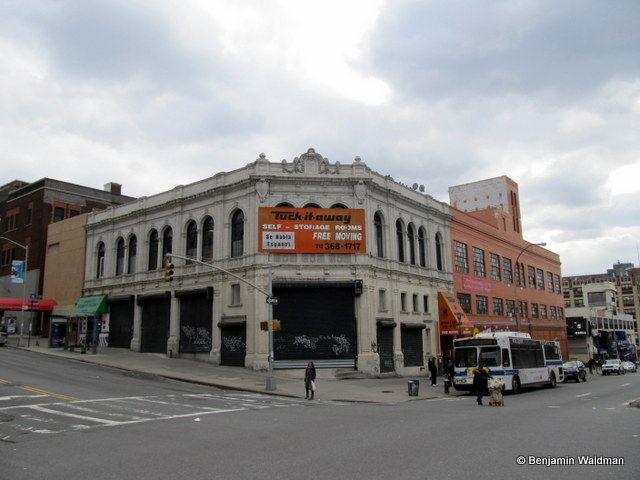
The Claremont Theater, located at 135th Street, opened in 1914. It was commissioned by Arlington C. Hall and Harvey M. Hall of the Wayside Realty Company, and designed by Gaetan Ajello in the Neo-Renaissance style. The 1,350 seat theater premiered with Oscar Apfel’s The Last Volunteer. The theater leased its dance hall and roof garden to a corporation called Claremont Danse later that year. The theater reached the pinnacle of its fame in 1915 when Thomas Edison produced a short film in which the theater’s entrance was prominently featured. By 1933, the interior of the theater was converted into an automobile showroom. The Claremont, one of the oldest structures in New York City planned specifically to exhibit motion pictures, was designated a landmark by the City of New York in 2006. Today is houses the beleaguered Tuck-It-a-Way storage, one of the companies who fought Columbia University’s expansion plans in Harlem.

The Midtown Theater was completed in 1933 and designed by Russell M. Boak and Hyman Paris in the Art Deco style. In 1982, the theater was taken over by Daniel Talbot and renamed the Metro Theater (the name that still adorns the marquee). During a recent renovation, the interior of the theater was gutted. Images of the theater’s former interior can be seen in The New York Times. The theater currently remains an empty shell of what it once was while it awaits its next tenant.
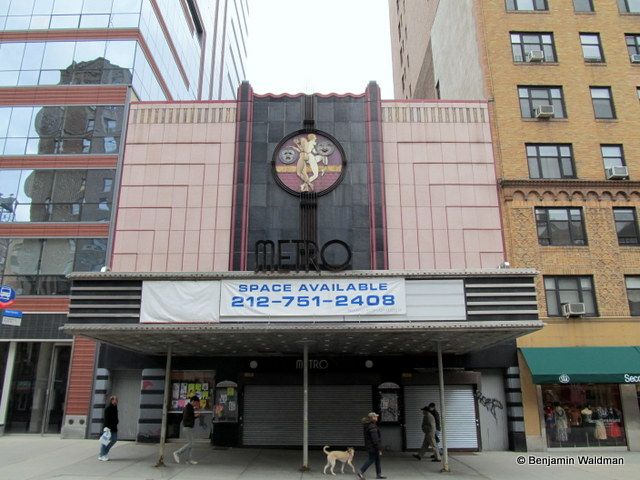
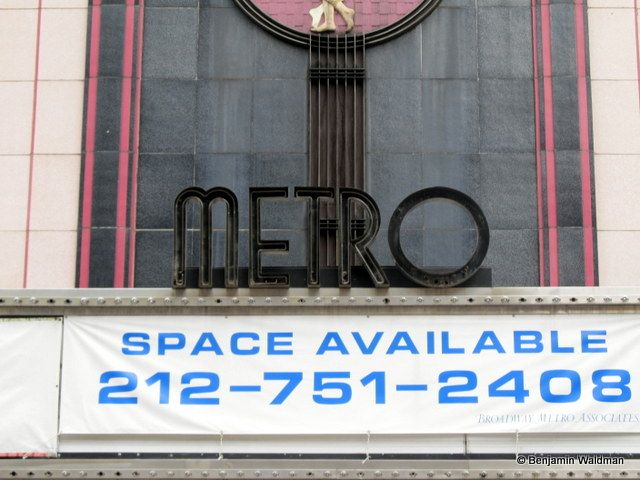
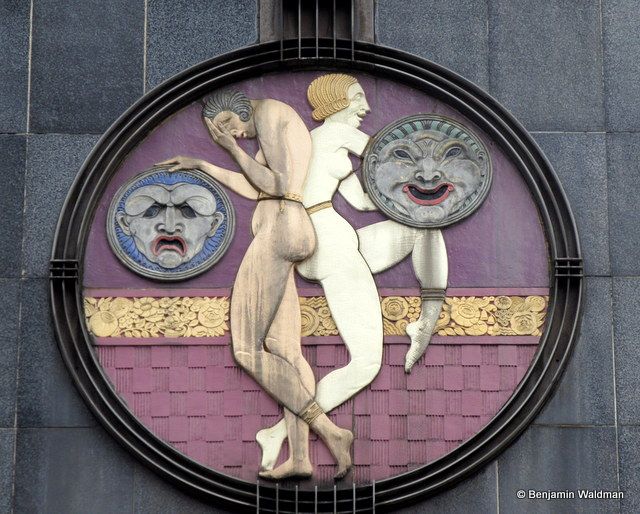
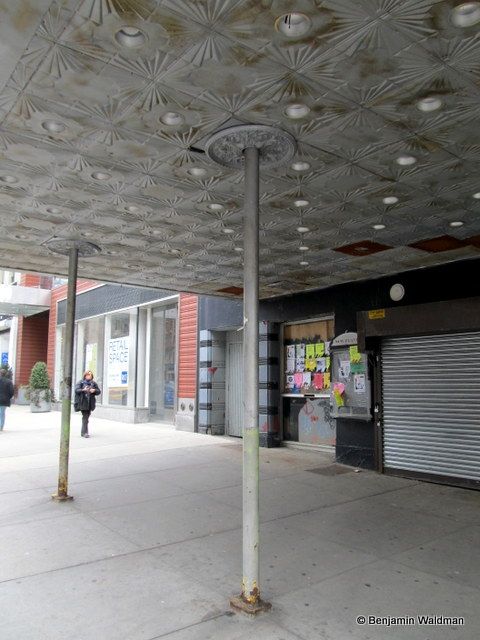
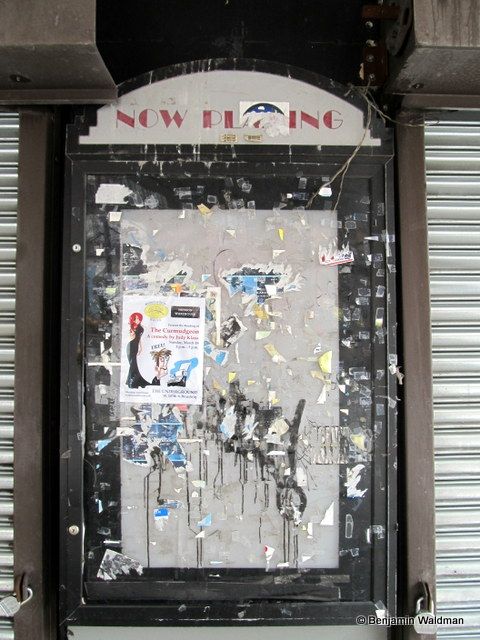
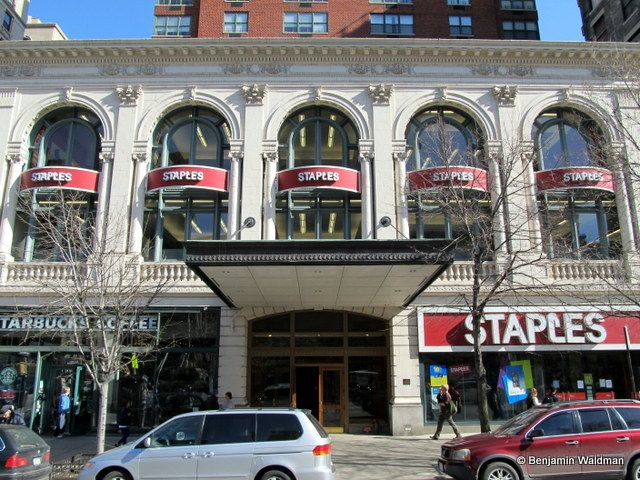
The former RKO 81st Street Theater opened in 1913 as a vaudeville theater. The 2,015 seat theater was designed by Thomas Lamb and was purchased by RKO in 1919. In 1954, CBS purchased the theater and converted it into their first major color television studio in New York. As CBS Studio 72, the theater saw the live color broadcast of Rogers and Hammerstein’s Cinderella in 1957. The lobby’s interior was gutted and the theater was demolished in 1986 to make way for an apartment building and retail space, now occupied by Staples and Starbucks. Next time you walk by, pay attention to the theater themed details.
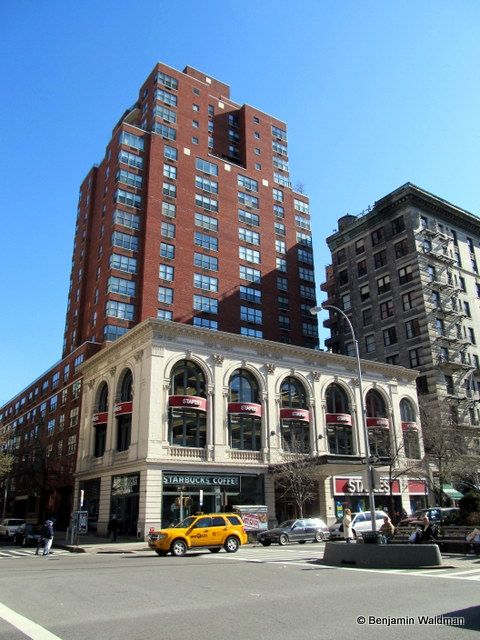

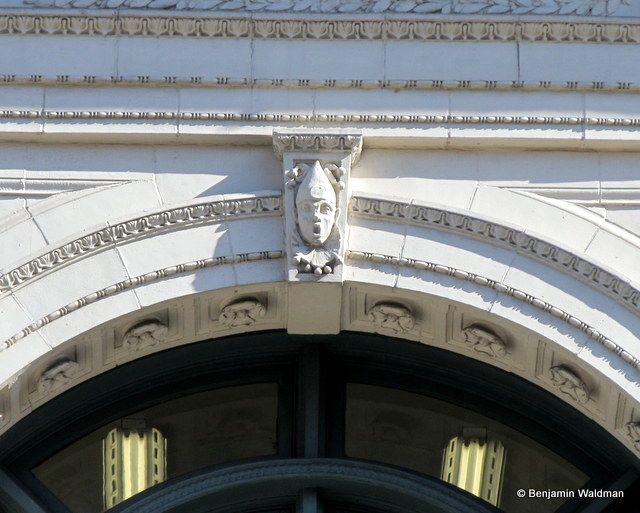
Subscribe to our newsletter